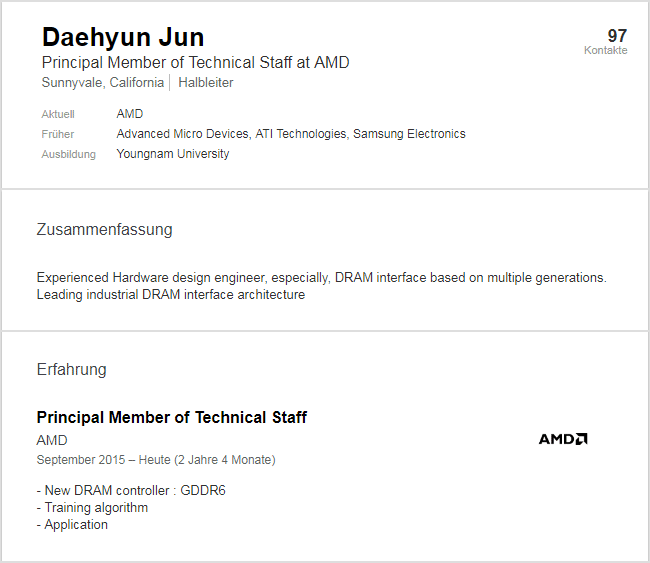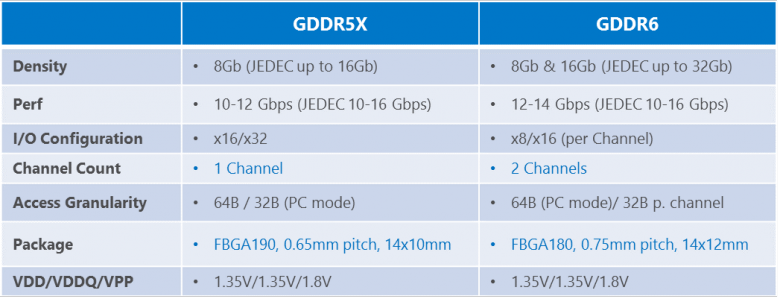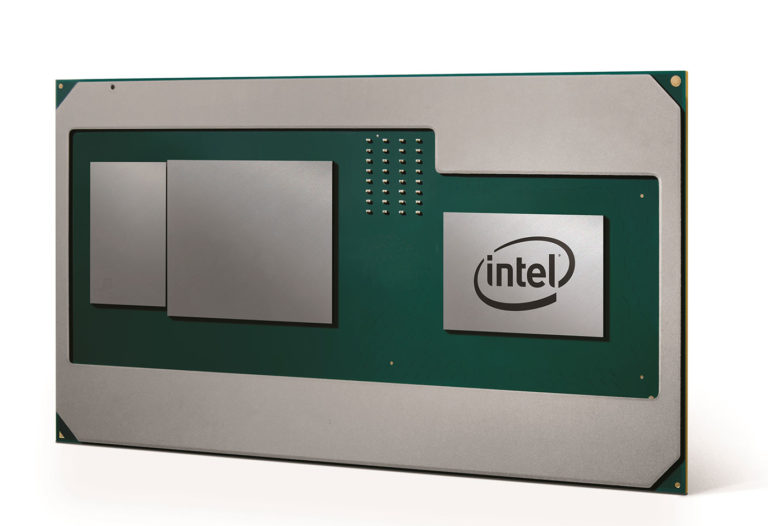New AMD GPUs could use GDDR6 Memory – HBM2 for High-end Cards

Rumor has it that AMD is working on a GDDR6 memory controller technology to use it in their future Radeon graphics cards. The second generation High Bandwidth Memory (HBM2) will, however, remain the memory of choice for the high-end Navi graphics card coming in 2018.
The leak originates from a picture of a LinkedIn profile of an AMD technical engineer that listed the GDDR6 memory in his profile. Originally spotted by 3DCenter, the picture suggests that AMD has been working on GDDR6 for more than two years and will be adopting it soon.

The three leading memory suppliers Samsung, Micron and SK Hynix have all confirmed that they will be producing the faster and more power-efficient DRAMs for next-gen products. Samsung has already listed a 16Gb GDDR6 chip in their portfolio. The new DRAM can deliver 16Gbps transfer rate with 64GB/s bandwidth, while operating at just 1.35 volts.
For comparison, the current generation GDDR5 offers a transfer speed of 8Gbps at relatively higher power consumption (1.5V). GDDR5 can reach up to 9 Gbps as we’ve seen in case of the Nvidia GTX 1060 6GB variant, which is basically the practical limit of this memory architecture.

We also have a refined implementation of GDDR5 in the form of GDDR5X, which operates at much faster speeds. As confirmed by Micron, GDDR5X has achieved the same speeds of 16 Gbps as GDDR6, though the latter features better optimizations and high densities.
Now a previous AMD roadmap suggests that their new graphics cards based on the Navi architecture will use the “NextGen Memory.” This will likely be an optimized HBM2, which means the company will be sticking with the same memory technology as before for their upcoming line of high-end graphics cards. This should also indicate that either we’ll not see any GDDR6 based cards in 2018, or AMD will limit it to their mid-range GPUs.

AMD’s current Vega GPUs use two stacks of HBM2 for a total of 8GB memory. According to team red, it chose HBM2 memory for Vega because of its benefits on multiple fronts. The second generation product offers nearly twice the bandwidth per pin of the first generation HBM, and 3x the bandwidth per watt compared to GDDR5.
That being said, HBM2 memory is still quite expensive, perhaps prohibitively so for the GeForce Volta card. Reportedly, Nvidia isn’t going to opt for HBM2 on their new Volta-based consumer cards; instead they will use GDDR5X, or even GDDR6 memory.






